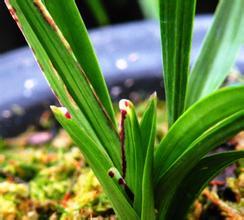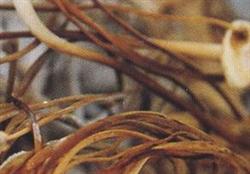Flower fertilization

Flower fertilization is complicated, and the general principles are as follows: the amount of fertilizer should be applied a small amount for many times; inorganic chemical fertilizer should not be applied or touch the base of the stem; organic fertilizer should be used after composting and ripening; it should be applied more when plants grow vigorously in high temperature and humidity weather in summer; it should be applied less when plants with low temperature and weak light grow slowly in winter. After heavy rain or when the plant leaves are yellow-green and lack of fertilizer, and so on, the fertilizer application methods for different situations are as follows: 1. Flower base fertilizer-most of the mature organic fertilizer is used in large area planting flowers or nutrient nursery beds. The application rate of base fertilizer is 1500 kg / mu, and if cake fertilizer, bone meal and livestock dry manure are used, the amount of basic fertilizer is 100 jin / mu, or 20 jin / mu of biological fertilizer is applied at the same time, and it can be planted in a few days after soil preparation. Nutrient nursery bed mostly uses strong adsorptive medium seedling net such as peat, add appropriate amount of nutrient elements before planting, let it fully absorb and then plant, can also add manganese, iron, zinc, boron, copper and molybdenum trace elements of 0.001-1ppm at the same time. 2. Topdressing of potted flowers-potted flowers need to supplement a variety of nutrients at any time because of their limited medium capacity. For the seedlings that have turned green and have new leaves, they should start topdressing, and the amount of topdressing should depend on the size of the basin, applying compound fertilizer 40-40 per pot (imported compound fertilizer); for the seedlings that have grown strong, apply 100-120 per pot, twice a month, combined with spray formula liquid fertilizer for 5-8 times; in case of heavy rain, topdressing should be applied once. Topdressing should be applied on the periphery of the basin, away from the base of the stem as far as possible, especially not to let the fertilizer grains fall into the center of whorled leaves (such as dragon blood trees, pineapples, etc.). If you need to promote flowers, you can add 0.2% potassium dihydrogen phosphate to speed up the development of flower buds, usually 3 Mel once every 5 days. Topdressing methods for different kinds of potted flowers: ① bulb and fleshy flowers topdressing seedlings supply information-because bulbs and fleshy stems can store nutrients and have fewer roots, the amount of topdressing can be halved according to the normal amount. Because of their high requirements for nitrogen, potassium and calcium, potassium nitrate and calcium nitrate are often used in the use of formula liquid fertilizer. ② fibrous root flowers are required to be planted in loose media, such as rhododendron, ornamental pineapple, etc. Topdressing requires a small amount of fertilizer for many times, and the amount of topdressing is the normal amount of 1max 5mer 1max 4, that is, 1530 grains of compound fertilizer can be applied to each pot. ③ big leaf type shade foliage flower topdressing-this flower grows rapidly, the root system is developed, and needs a lot of fertilizer, such as evergreen of Araceae. In addition to the normal amount of topdressing, 120 grains of compound fertilizer were applied twice a month, and the formula liquid fertilizer was sprayed for 8 times. ④ bonsai topdressing-bonsai fertilization is characterized by less quantity and long fertilizer effect. Generally with slow-acting organic fertilizer such as bone meal, cake fertilizer as the main body, mixed with the slow release of urea formaldehyde, phosphate rock powder and a small amount of available fertilizer. If there is no ready-made bonsai special fertilizer, you can use the commercial flower fertilizer reel into olive oil or plastic film coating liquid treatment, can achieve a sustained, long-term effect, the fertilizer can be shallowly buried under the basin edge substrate. The bonsai produced in a large area can be sprayed with formula liquid fertilizer, spraying once every 5 days, and spraying water and washing salt alternately. When the pot soil can not maintain the normal growth of flowers, there will be yellowing leaves, thin branches, small flowers and sparse fruits, so it is necessary to apply fertilizer. However, fertilization should be based on the variety of flowers, habits, the purpose of fertilization and the lack of elements in the price of seedlings to determine the type, quantity, times and methods of fertilizer. Family flower planting can be divided into two kinds: court planting (that is, open field planting) and pot planting, and fertilization should also be different. Although courtyard planting is different from the field, the ground temperature is high, the range is wide, and it is convenient to absorb water and fertilizer, so the frequency of fertilization and watering can be less, and the thicker fertilizer will not cause fertilizer damage for a while. Potted plants are different, due to environmental limitations, on the one hand, we can not lack of fertilizer to prevent element deficiency; on the other hand, it is necessary to prevent excessive fertilizer, resulting in fertilizer damage to the plant and affect the normal growth of the plant. Plant habits are also divided into fertilizer and barren tolerance, such as citrus, Phyllostachys pubescens, pomegranate, arrow lotus and other fertilizer-loving plants should be more fertilized, while rhododendron, black pine, needle-free pine and other barren plants should apply thin fertilizer. Because the cuckoo has fine roots and weak fertilizer absorption, more fertilizer suffers, and less fertilizer affects flowering. To apply fertilizer, we must first understand the types of fertilizers and their functions. The basic nutrients of flowers are nitrogen, phosphorus and potassium: 1. Nitrogen fertilizer: it can promote the branches and leaves to flourish and improve the flowering rate. Common nitrogen fertilizers include human feces, urine, ammonium sulfate and so on. 2. Phosphate fertilizer: it can make the flowers bright, firm and full. Common phosphate fertilizers include rice bran, fish scales, bone meal, chicken manure, calcium superphosphate and so on. 3. Potash fertilizer: it can make the root system grow strong, enhance the resistance of flowers to diseases and insect pests, cold and heat, and increase the fragrance of flowers. Common potash fertilizers include rice straw ash, plant ash, potassium sulfate and so on.
- Prev

Control of basal rot of Flammulina velutipes
In the growth and development stage of the symptomatic fruiting body, the base of the stalk became dark brown to black erosion, and after the base eroded, the fruiting body lodged. Although the young mushroom cluster does not lodge, it can not continue to grow and develop upward. When it occurs seriously, the acicular young mushroom becomes black and eroded. Penicillium viridis, the pathogen, belongs to the subphylum Penicillium.
- Next

Harm and Control of soft Rot of Orchid
Generally speaking, if the orchid grows very strong and the root system is very developed, its disease resistance is relatively strong. If the orchid does not grow very well, coupled with poor care, it is very easy to get sick. In this season, orchids are prone to soft rot if they are poorly ventilated. Soft rot is very harmful.
Related
- Fuxing push coffee new agricultural production and marketing class: lack of small-scale processing plants
- Jujube rice field leisure farm deep ploughing Yilan for five years to create a space for organic food and play
- Nongyu Farm-A trial of organic papaya for brave women with advanced technology
- Four points for attention in the prevention and control of diseases and insect pests of edible fungi
- How to add nutrient solution to Edible Fungi
- Is there any good way to control edible fungus mites?
- Open Inoculation Technology of Edible Fungi
- Is there any clever way to use fertilizer for edible fungus in winter?
- What agents are used to kill the pathogens of edible fungi in the mushroom shed?
- Rapid drying of Edible Fungi

